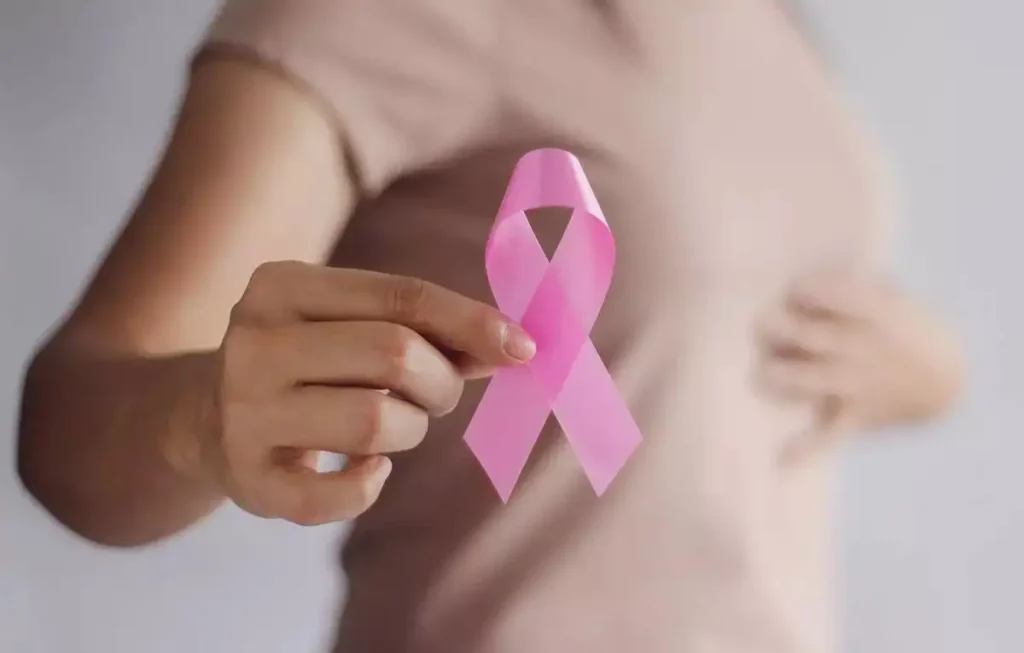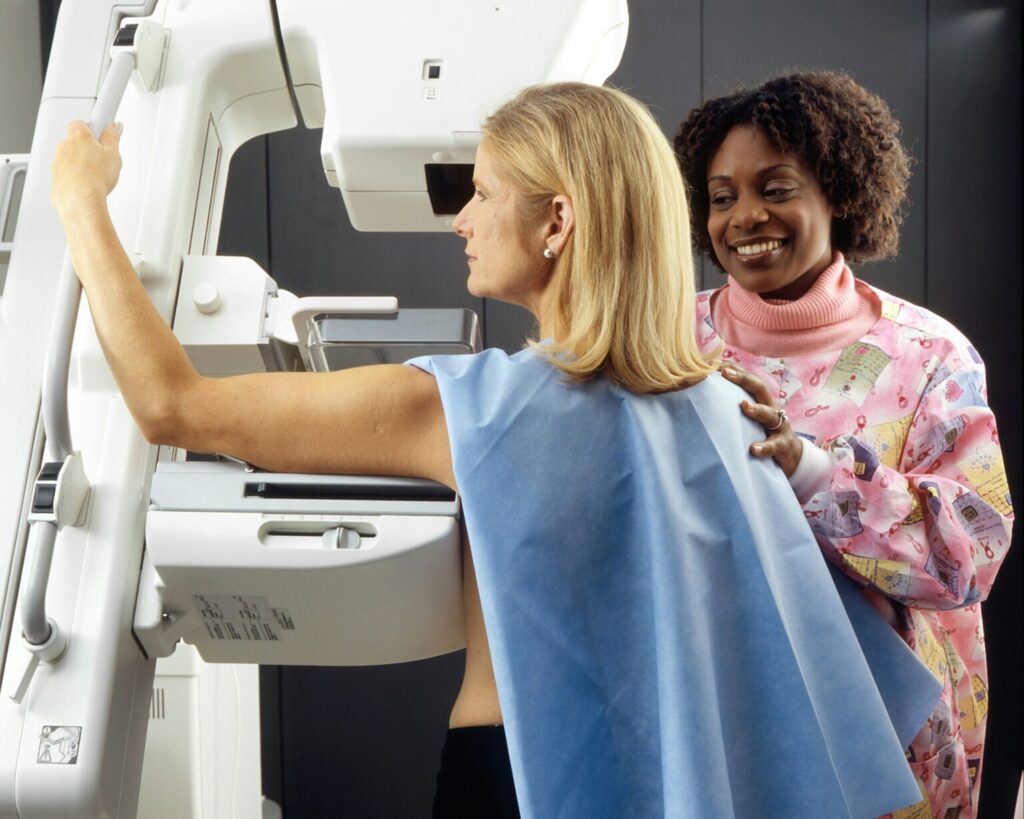
What is Breast Cancer?
Breast cancer is a condition that arises when normal breast cells accumulate abnormal changes in their genetic material (DNA mutation) and are transformed into harmful cancer cells that grow uncontrollably and live longer than usual, damaging surrounding breast tissue. The cells can spread to other sites in the body by a process known as metastasis.
Breast cancer can affect males and females, but it’s more common among females. It is the commonest cancer among women, with up to 2.3 million new cases and close to 700,000 deaths attributed to the disease worldwide. The rate at which new cases of breast cancer are diagnosed is higher in high-income countries, possibly due to improved screening modalities and lifestyle choices. In contrast, the number of new cases is increasing in the low and middle countries, while there are more deaths from the disease in these countries due to late-stage diagnosis and limited access to treatment.
Why Do People Develop Breast Cancer?
Breast cancer develops from a combination of genetic and lifestyle-related factors. Scientists have found that a healthy lifestyle may mitigate against breast cancer in women who are genetically at risk. Oestrogen, a substance produced in the female ovaries, plays a vital role in the onset and progression of breast cancer. Research has shown that a higher level of oestrogen is associated with a greater risk of developing breast cancer, especially in middle-aged and elderly women who have stopped menstruating. The way oestrogen works in relation to breast cancer involves its attachment to specialised areas of a cell’s surface called receptors, triggering responses that make cells divide and proliferate with higher survival resulting in the formation of cancerous mass (tumour).
External sources of oestrogen, for instance, the combined oral contraceptive pill and hormone replacement therapy in postmenopausal women, have been suggested to be linked with an increased risk of breast cancer.
Lifestyle-related factors such as diets and body weight are associated with the risk of breast cancer. Westernised diets characterised by high sugar and high fat (animal fat) as well as processed foods play roles in the risks of breast cancer. Furthermore, obesity elevates the risk of breast cancer, possibly due to the higher level of oestrogen in heavier women. In particular, increased deposition of fat tissue around the central body parts—the waist and hip—has been identified as an important risk factor for breast cancer.
Another lifestyle practice that increases the risk of breast cancer is alcohol consumption.
Unlike many cancers, the link between smoking and breast cancer is not clear-cut with scientific studies yielding inconsistent results.
How is Breast Cancer Diagnosed?
Samples of tissue are removed from the areas of the breast with suspected cancer and examined under the microscope by specialist doctors (histopathologists) to make a diagnosis of cancer.
Excisional biopsy—the entire mass is removed
Incisional biopsy—a small tissue sample is taken.
What are the types of Breast Cancer?
- Ductal cancer starts in the cells that line the milk duct—a tubelike structure that carries milk secretion.
Ductal carcinoma in-situ (DCIS) – cancerous cells are limited to the ducts
Invasive carcinoma – cancer cells infiltrate other parts of the breast and can spread to the lymph nodes and other parts of the body, commonly the lungs, liver and brain.
- Lobular Cancer–starts in the cells that line the lobules, glandular tissue where milk is produced.
Lobular carcinoma in situ—the cancer is limited to the breast lobules
Invasive lobular carcinoma – the cancers cell infiltrate surrounding tissue and can spread to other body sites, especially abdominal organs and bones
There are other types of breast cancer based on the tissue structure (histolology appearance), such as medullary, mucinous, tubular, papillary, secretory, etc. The detail discussion of these subtypes is beyond the scope of this article.
What are the Symptoms of Breast Cancer?
You may experience the following symptoms if you have breast cancer, depending on the stage of the disease
- Breast lump or mass: It is the most common symptom of breast cancer and is usually described as a hard, irregularly shaped mass that might be painless or painful. Sometimes, mass can also be felt in the armpit region, suggesting cancer spread to the lymph node.
- Changes in breast size or shape involving one or both breasts: may be accompanied by skin dimpling or puckering
- Nipple discharge: bloody or clear discharge from nipple may indicate underlying malignancy
- Skin changes: breast cancer is associated with various skin changes, including
- Peau d’orange: A dimpled, orange-peel appearance of the skin due to blockage of lymphatic channels.
- Redness or Rash: Inflammatory breast cancer, a rare but severe form of breast cancer, may present with redness, swelling, and warmth in the breast.
- Ulceration: advanced breast cancer may lead to ulcerated lesions on the breast surface.
- Systemic symptoms: Breast cancer may present with unexplained weight loss, loss of appetite, fatigue, and bone pain in advanced-stage disease.
How Can Breast Cancer Be Prevented?
Healthy Diet: You can mitigate the risk of breast cancer through healthy eating practices.
The Mediterranean diet, characterised by a high consumption of fruits and vegetables, whole grains, legumes, and healthy fats (especially olive oil), has been related to a lower risk of breast cancer.
Physical Exercise: Research has shown that engaging in structured exercise can help lower the risk of breast cancer and improve outcomes for those diagnosed with it.
Physical activity may help regulate body weight, lower oestrogen levels, and boost immunefunction, all of which lead to a lower cancer risk.
Healthy weight: It is important to maintain healthy weight, especially after menopause to lower the risk of breast cancer. Weight gain after menopause is related to an increased risk of breast cancer, particularly for hormone receptor-positive subtypes.
Periodic Screening
Mammography (X-rays of the breast) helps in the early detection of breast cancer.
In the United Kingdom breast cancer screening with a mammogram is recommended for females between 50 and 71 years old every three years until 71 years.

Genetic Counselling and Testing
Genetic counselling and testing for mutations such as BRCA1 and BRCA2 to determine personal risk can benefit women with a family history of breast cancer. Those identified as high risk may consider preventive measures, such as intensified surveillance or surgical removal of breast to prevent cancer (prophylactic mastectomy).
Breastfeeding
Breastfeeding has been linked to a lower incidence of breast cancer, especially if it is continued for a long duration. The protective effect could possibly be attributed to hormonal changes that occur during lactation, which can limit the number of menstrual cycles a woman undergoes, therefore lowering overall oestrogen exposure.
What treatment options are available for breast cancer?
Breast cancer is managed through different methods, including:
- Surgery: There are various surgical procedures for management of breast cancer
- Lumpectomy – removal of the tumour as well as a small portion of normal breast tissue. It is indicated for small-sized tumours in early-stage breast cancer. It allows for tumour removal while preserving the breast tissue.
- Simple mastectomy—removal of entire breast.
- Modified radical mastectomy—removal of entire breast and lymph node in the armpit.
- Chemotherapy: It is the use of drugs to destroy cancer cells. It can be in the form of injections or pills. It may be administered before surgery (neoadjuvant) to shrink tumours or after surgery (adjuvant) to eradicate remaining cancer cells.
- Radiotherapy refers to the use of radiation energy to kill cancer cells. It is usually recommended after surgery or chemotherapy.
- Hormonal Therapy: Drugs that block hormones are used to slow down or stop the growth of cancer cells. Example is Tamoxifen, used to block the effect of oestrogen.
- Targeted therapies attack specific cancer cells but are not harmful to normal breast tissue. Trastuzumab (Herceptin) targets HER2 proteins that promote cancer cell growth and is used to treat breast cancers that have HER2 molecules in them.
- Supportive Treatment-
- Pain management: Effective pain control is essential in maintaining quality of life in patient diagnosed with breast cancer
- Nutritional support: Weight loss and nutritional impairment might result from breast cancer and associated treatment. Dietary support help to maintain nutrition
- Psychosocial support: Counselling and support groups can help people cope with the emotional burdens of receiving a breast cancer diagnosis.
Support and Resources
Check out the following link for support and resources on breast cancer: